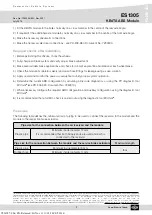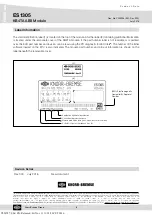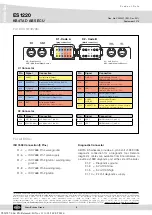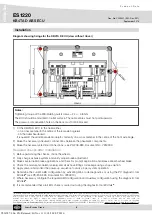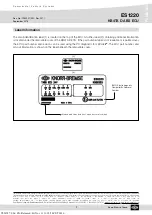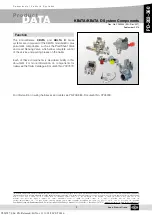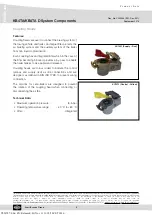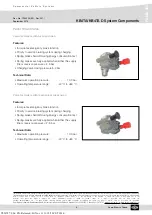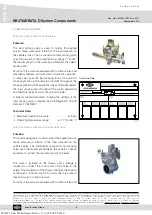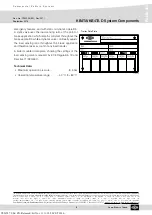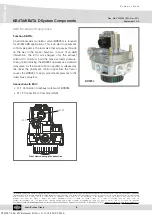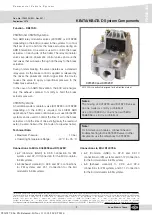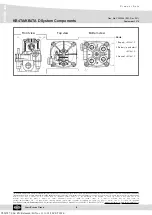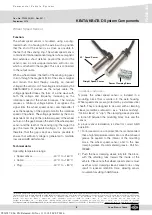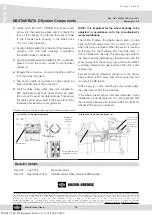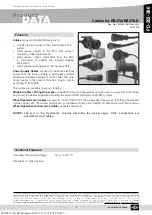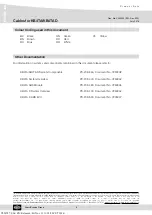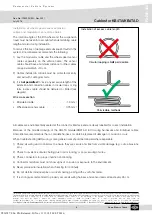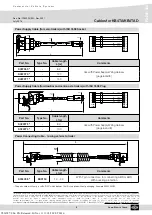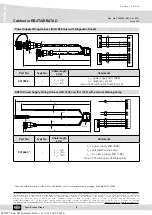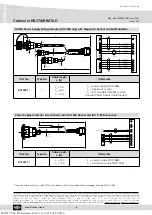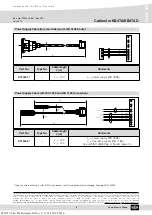
4
Knorr-Bremse Group
PD-203-360
Doc. No. Y250908 (EN - Rev. 001)
September 2016
The information contained herein is subject to alteration without notice and therefore may not be the latest release. Please check our website www.knorr-bremseCVS.com for the latest update or contact your local Knorr-Bremse representative.
The figurative mark “K” and the trademarks KNORR and KNORR-BREMSE are registered in the name of Knorr-Bremse AG. Additional terms and conditions apply; please refer to our website knorr-bremseCVS.com for full Disclaimer.
Note: If service work is carried out on a vehicle based on information provided herein, it is the responsibility of the workshop to ensure the vehicle is fully tested and in full
functional order before the vehicle is returned into service. Knorr-Bremse accepts no liability for problems caused as a result of appropriate tests not being carried out.
Copyright © Knorr-Bremse AG - all rights reserved, including industrial property rights applications. Knorr-Bremse AG retains any power of disposal, such as for copying and transferring.
Knorr-Bremse Systeme für Nutzfahrzeuge GmbH . Moosacher Straße 80 . 80809 Munich . Germany . Tel: +49 89 3547-0 . Fax: +49 89 3547-2767 . www.knorr-bremse.com . www.knorr-bremseCVS.com
KB4TA/KB4TA D System Components
P r o d u c t D a t a
Load Sensing Valve
Valve for trailers with air suspension
Features:
The load sensing valve is used to modify the applied
service brake pressure in relation to the load imposed on
the vehicle’s axles. The air suspension load sensing valve
uses the pressure in the suspension air springs to “sense”
the load imposed on the axles and determine the valve’s
braking ratio.
Versions of the valve are available with or without relay and
emergency features, and with static or dynamic operation.
A static valve uses the load sensing ratio at the point of
brake application which remains constant throughout the
brake application while a dynamic valve continually adjusts
the load sensing ratio throughout the brake application
and therefore takes account of any load transfer.
A trailer mounted data plate, showing the settings of the
load sensing valve is required by ECE Regulation 13 and
Directive 71/320/EEC.
Technical Data:
• Maximum operation pressure: . . . . . . . 8,5 bar
• Operating temperature range: . . . -40 °C to +80 °C
Valve for trailers with mechanical suspension
Function:
The load sensing valve is used to adjust the applied service
brake pressure in relation to the load imposed on the
vehicle’s axles. The mechanical suspension load sensing
valve uses the movement between the vehicle’s chassis
and axles to „sense“ the load imposed on the axles.
The valve is installed on the chassis and a linkage is
required to connect the control arm of the valve to the
axle(s). Any movement of the chassis changes the position
of the valve’s control arm which, in turn, alters the ratio of
input pressure to output pressure.
Versions of the valve are available with or without relay and
Trailer Data Plate
Y026787: 006: EN: Released: Fri Nov 11 11:18:50 CET 2016:


